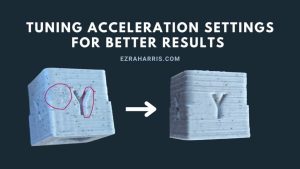Tag: Short Read
-

Spotting Fake Phishing Emails
Yesterday I checked my Gmail spam folder, and I saw this email: The contents of the email are a general threat of a typical phishing email with the following: It threatened to lock your various email accounts and asked for $950 sent to a BTC wallet. This is a pretty obvious scam in many ways,…
-

Tuning Acceleration on my 3D Printer
Yesterday I got my Printrbot Simple Metal plus running, I had gotten it previously running, but it had significant build issues, mainly with no ease of access of the motherboard, when I designed the adapter for the SKR 1.4 motherboard to fit into the old Printrbot motherboard slot, I had no way of accessing the…
-
Upgrades for my Ender-3
I finally got around to fixing and upgrading my Ender-3. I’ve had my Ender3 for almost 2 years now and have occasionally been upgrading when needed. Last year I made my best upgrade to the “silent board” TMC2208 stepper drivers. Which significantly silenced the noise of the printer when printing. As well as a BL…
-
The Benefits of Plastic
Plastics (or synthetic polymers) were first introduced back in the 19th century when they were trying to find an alternative to Ivory; ivory is also used in billiard balls (or pool balls in the US) Ivory was more commonly made using Elephant tusks, and was used in the making of small sculpted works of art,…